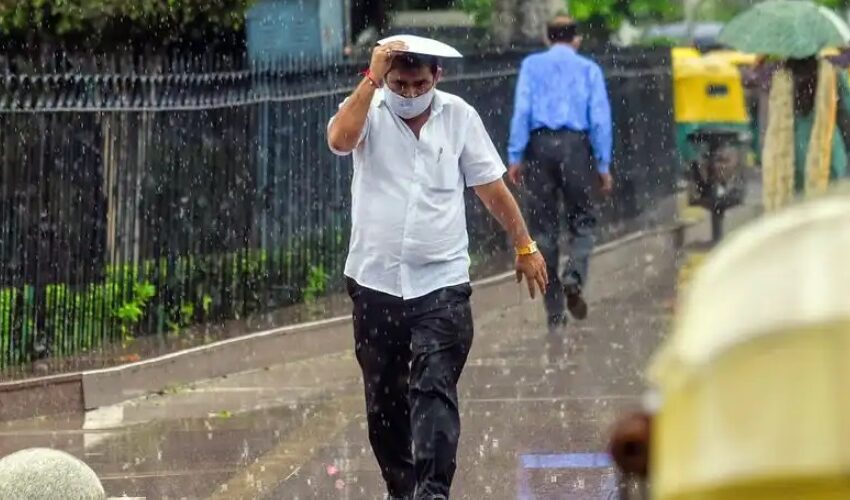
Monsoon Brings Cool End to June in Delhi; Rain Alert Issued till July 5
Delhi’s monthly average maximum temperature has been 37.8°C—1.2 degrees below the long-period average (LPA) of 39°C for June
With the monsoon finally making its much-awaited foray into Delhi on Sunday, as announced by the India Meteorological Department (IMD), June is set to end wetter and cooler than usual, keeping in line with the trend the previous month, as Delhi recorded its wettest May historically, according to data.
Delhi’s monthly average maximum temperature has been 37.8°C—1.2 degrees below the long-period average (LPA) of 39°C for June—and the average monthly minimum has been 27.2°C, 0.5°C below the LPA, IMD data showed. Last year, they were 41.6°C and 29.8°C, respectively, and 37.2°C and 25.9°C in 2023.
IMD officials said June this year has been similar to June 2023, when consistent rainfall was seen throughout the month, making for cooler day and night-time temperatures. “Even without the monsoon, Delhi had already seen excess rain, thanks to active weather systems and western disturbance in northwest India. We saw consistent spells of light rain in the city and frequent days where overcast skies were observed. This helped in regulating temperature, although humidity was high on a few days,” an official said.
Delhi added 5.3mm in monthly rainfall on Sunday, taking the monthly rainfall total to 98.2mm—an excess of around 32% from the monthly LPA of 74.1mm, data showed. Last year, Delhi received 243.3mm in monthly rainfall, but this was down to a single-day spell of 228.1mm on June 28, when the monsoon arrived in Delhi. In June 2023, excess rain was again seen in the city, with 101.7mm recorded throughout the month.
IMD data shows in the last decade, June has seen excess rain in Delhi on four occasions since 2015: in 2024, 2023, 2022 and 2017.
In May, Delhi recorded 186.4mm of rainfall, against the LPA of 30.7mm, making it the wettest May on record. The IMD has forecast July to start on a similar note, with chances of light rainfall and overcast skies expected till July 5.
Delhi normally records 640.4mm of rainfall in monsoon. The normal rainfall mark for the year is 774.4mm for the Capital.
Monsoon preparedness

With the city’s agencies claiming to have achieved unprecedented levels of desilting of drains, the city’s drainage network will be put to the test in the coming days.
According to the Municipal Corporation of Delhi (MCD), 156,000 tonnes of silt has been removed from drains (wider than 4ft) against the target of 126,000 tonnes. MCD commissioner, while addressing the standing committee last Friday, said that low-lying areas may still face waterlogging as the corporation was “neither God” nor it had “control over lord Indra.”
A senior MCD official said that six super sucker machines and 42 suction-jetting machines, among other machinery, have been deployed.
An MCD official said: “People can lodge their complaint at the centralized helpline number 155305, 9643096430 or the MCD 311 mobile application.”
Similarly, in the case of PWD, the complaint can be filed at toll-free number 1908 or 011-23490323 or via WhatsApp on 8130188222, the agency’s flood control order states. Complaints related to sewage overflow with DJB can be filed on the 1916 helpline.
For residents of New Delhi, all monsoon-related complaints can be logged with the 1533 helpline or on the NDMC 311 mobile app.
To minimise the risk of electrocution, power discoms on June 26 issued advisories urging people to maintain a safe distance from electrical installations and follow all safety precautions during monsoon. According to the advisory, a few precautions that can help consumers stay safe include staying away from electrical installations like poles, substations, transformers and streetlights, stopping children from playing near electricity installations, and having electricity wiring in houses and buildings checked by licensed vendors.
It also advised consumers to turn off the main switch in case waterlogging or leakage is observed in the meter cabin, install an earth leakage circuit breaker (ELCB) to help avoid mishaps, and keep a tester at home to check moist switches.




